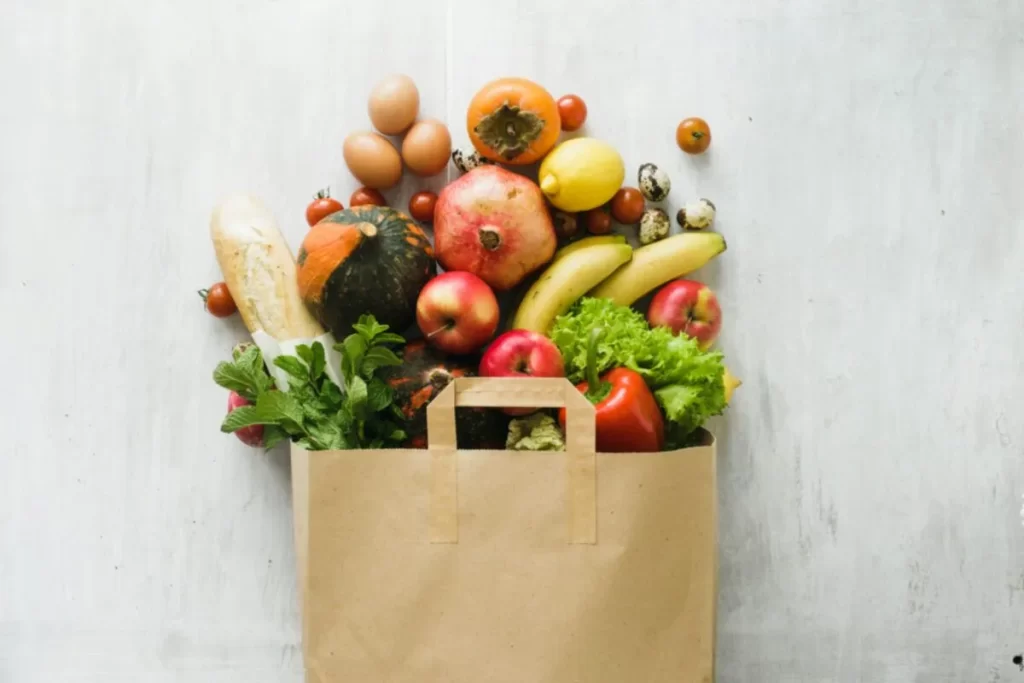“Transform Your Shopping Experience with This Healthy Grocery List”
Avoid the pitfalls of shopping on an empty stomach by ensuring you follow this nutritious grocery list. Here are some tips to keep in mind:
- Shop Smart, Not Hungry: Hunger can lead to impulsive and unhealthy food choices. Grab a wholesome snack before heading to the store to maintain better control over your selections.
- Diverse Food Groups: Embrace a balanced diet by including items from all food groups. Restricting any macronutrient—carbs, fat, or protein—may lead to nutritional imbalances. Optimal health is achieved through a well-rounded combination of these essential elements.
Explore the nutritional benefits of each food group using Seven’s comprehensive nutrition guides.
Now, let’s compile your shopping list with these healthy food options from various groups:
Fruits and Vegetables:
- Berries (strawberries, blueberries, raspberries)
- Leafy greens (spinach, kale, arugula)
- Citrus fruits (oranges, grapefruits, lemons)
- Cruciferous vegetables (broccoli, cauliflower, Brussels sprouts)
Proteins:
- Lean meats (chicken breast, turkey, lean beef)
- Fish (salmon, tuna, cod)
- Plant-based proteins (tofu, lentils, chickpeas)
Carbohydrates:
- Whole grains (brown rice, quinoa, oats)
- Colorful vegetables (sweet potatoes, bell peppers, carrots)
- Legumes (black beans, kidney beans, peas)
Healthy Fats:
- Avocados
- Nuts (almonds, walnuts, pistachios)
- Olive oil
Dairy or Dairy Alternatives:
- Greek yogurt
- Almond milk
Snacks:
- Hummus with veggie sticks
- Greek yogurt with fruit
- Nuts and seeds mix
Beverages:
- Water
- Herbal teas
This comprehensive list ensures your pantry and refrigerator are filled with nutritious options, setting you up for success on your health journey. Happy and mindful shopping!
Choosing the right foods at the grocery store is crucial for maintaining a healthy and balanced diet. Here’s a guide to help you make nutritious choices in various food categories:
Healthy Carbs:
- Vegetables
- Fruits: apples, bananas, strawberries
- Legumes: Beans (chickpeas, kidney beans, black beans), peas
- Nuts: almonds, walnuts, hazelnuts, macadamia nuts, peanuts
- Seeds: chia seeds, pumpkin seeds
- Whole grains: oats, quinoa, brown rice
- Tubers: potatoes, sweet potatoes
Healthy Proteins:
- Eggs
- Seafood or fish (salmon, trout, tuna, lobster)
- White meat poultry
- Milk, cheese, yogurt
- Lentils
Ensure you’re getting enough protein by determining the right amount for your needs.
Healthy Milk and Dairy Products:
- Greek Yogurt
- Cottage cheese
- Hard cheese like parmesan
- Kefir and organic dairy products
Super (and Sweet) Fruits:
- Grapefruits
- Pineapple
- Avocado
- Blueberries
- Pomegranate
- Mango
- Cranberries
- Lemons
- Watermelon
- Oranges
- Blackberries
Fats and Sugars:
- Butter
- Extra virgin olive oil
Choose the healthy frozen food options: Navigating the frozen food aisles can be challenging, but there are healthy and cost-effective options. Look for:
- Frozen vegetables (broccoli, spinach, peas, carrots)
- Frozen fruits (berries, mango, pineapple)
- Frozen herbs (e.g., coriander, basil, dill, parsley)
- Frozen fish (salmon, trout, etc.)
- Frozen turkey and chicken
Buying frozen can reduce waste and provide healthy backup meals.
Buy healthy snacks:
- Whole-grain crackers
- Nuts: almonds, cashews, walnuts, peanuts, pecans, pistachios (roasted and unsalted)
- Seeds: sunflower seeds, sesame seeds, whole or ground flaxseed
- Peanut butter, almond, or soy butter
- Hummus
- Dark chocolate (containing more than 70% cocoa)
By incorporating these items into your grocery list, you can ensure your home is stocked with nutritious options for a well-balanced and wholesome diet.

